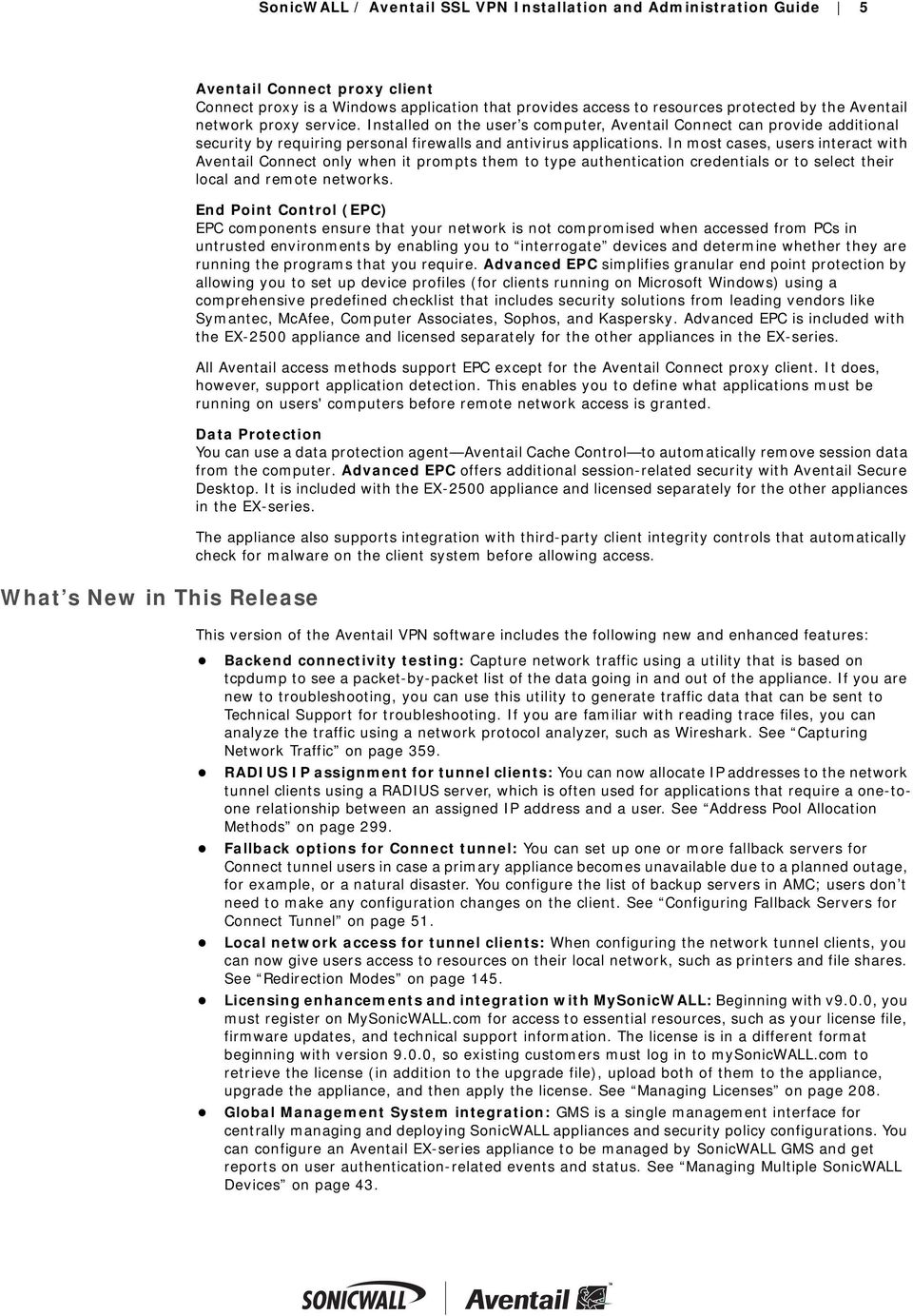In Windows 7, the only way to get the “quick launch” equivalent is to “pin” the object (e.g. The Aventail VPN launcher) to the taskbar. However not all objects can be “pinned”. In the case of third party applications such as Aventail, it’s up to the vendor (not Microsoft) to enable the support for “pinning” in Windows 7.

- JRI is currently awaiting Aventail's final version of the Aventail ST2 SSL VPN platform, which ships this month, to go operational with the second generation of its VPN.
- SonicWALL’s Aventail E-Class SRA products are in many ways “classic SSL VPN” appliances. Aventail was ahead of the curve when it first implemented many of the features described above, in part because the company focused on simplifying and extending secure access without trying to wedge VPN into a broader network portfolio.
- Deploying the SonicWall Aventail VPN Client with customized INI settings (K1000 6.2) There is an alternate way to deploy this software from a blog post in 2010.
There is an alternate way to deploy this software from a blog post in 2010
(http://www.itninja.com/question/mst-customaction)
But there is also a much easier way.
You should have an installation file from your SonicWall for install such as 'ngsetup64_en.exe'.
You can obtain a copy of the client from your SSL VPN server in the section shown below.


Once the file is downloaded it can be expanded by running the following command from the containing directory
- ngsetup64_en.exe -expand=<path>
(Ideally this path should be the same as the location of the main EXE file.)
Once expanded, you will have 2 new files. 'ngvpn.msi' and 'ngsetup.ini'
For unattended installation and configuration with your custom settings you will need to modify the INI file using the instructions from the SonicWall administrators guide. In this case it is 10.5.5. (Page 268, PDF here: http://www.sonicwall.com/app/projects/file_downloader/document_lib.php?t=PG&id=520&dl=1 )
Once your INI file is modified you are ready to distribute the package. Keep the customized INI file in the same folder as the EXE. Run the install with the following command 'ngsetup64_en.exe -silent -f=ngsetup.ini' As long as the INI file is in the same folder as the installer you do not need to specify the full path to the INI file.
K1000 Managed installation instructions:
- To distribute this package using the Dell KACE K1000 Systems Management Appliance:
- Take the 3 files created above and zip them up.
- Upload the ZIP file to the correct software record under Inventory > Software
- Create a new Managed Installation under the Distribution tab.
- Choose the Aventail Connect software item from the drop down menu.
- Choose 'Override Default Installation' on the command section and enter 'ngsetup64_en.exe -silent - f=ngsetup.ini' in the field.
It should look like the screenshot below:
Configure your machine selection and managed action as needed.

Save it and you are done. The installation will deploy based on your choices above.
Uninstall command:
MsiExec.exe /X{C338ACAC-7162-42E3-8B8C-85E5746F4A2E} /QN
11/14/2014 - Update for K1000 version 6.2
